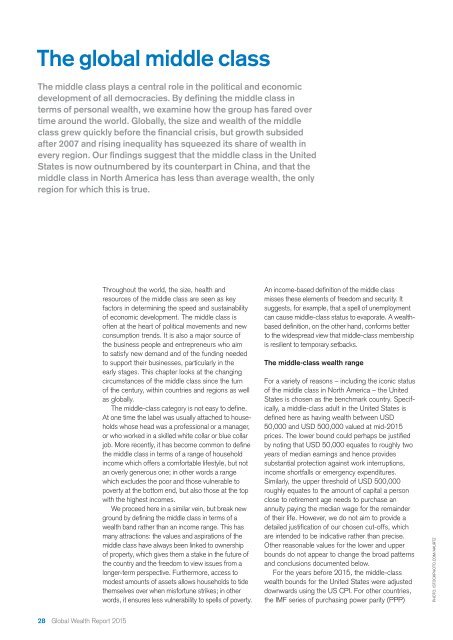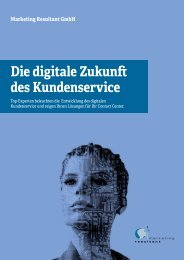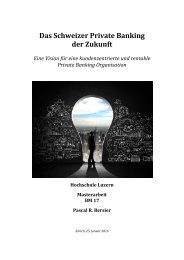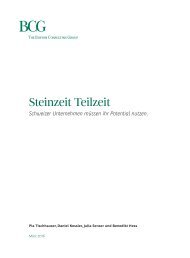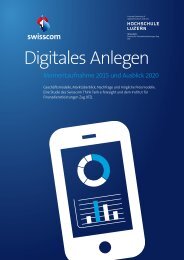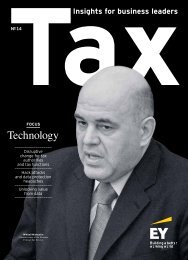Research Institute
ekthsi_0
ekthsi_0
Create successful ePaper yourself
Turn your PDF publications into a flip-book with our unique Google optimized e-Paper software.
The global middle class<br />
The middle class plays a central role in the political and economic<br />
development of all democracies. By defining the middle class in<br />
terms of personal wealth, we examine how the group has fared over<br />
time around the world. Globally, the size and wealth of the middle<br />
class grew quickly before the financial crisis, but growth subsided<br />
after 2007 and rising inequality has squeezed its share of wealth in<br />
every region. Our findings suggest that the middle class in the United<br />
States is now outnumbered by its counterpart in China, and that the<br />
middle class in North America has less than average wealth, the only<br />
region for which this is true.<br />
Throughout the world, the size, health and<br />
resources of the middle class are seen as key<br />
factors in determining the speed and sustainability<br />
of economic development. The middle class is<br />
often at the heart of political movements and new<br />
consumption trends. It is also a major source of<br />
the business people and entrepreneurs who aim<br />
to satisfy new demand and of the funding needed<br />
to support their businesses, particularly in the<br />
early stages. This chapter looks at the changing<br />
circumstances of the middle class since the turn<br />
of the century, within countries and regions as well<br />
as globally.<br />
The middle-class category is not easy to define.<br />
At one time the label was usually attached to households<br />
whose head was a professional or a manager,<br />
or who worked in a skilled white collar or blue collar<br />
job. More recently, it has become common to define<br />
the middle class in terms of a range of household<br />
income which offers a comfortable lifestyle, but not<br />
an overly generous one; in other words a range<br />
which excludes the poor and those vulnerable to<br />
poverty at the bottom end, but also those at the top<br />
with the highest incomes.<br />
We proceed here in a similar vein, but break new<br />
ground by defining the middle class in terms of a<br />
wealth band rather than an income range. This has<br />
many attractions: the values and aspirations of the<br />
middle class have always been linked to ownership<br />
of property, which gives them a stake in the future of<br />
the country and the freedom to view issues from a<br />
longer-term perspective. Furthermore, access to<br />
modest amounts of assets allows households to tide<br />
themselves over when misfortune strikes; in other<br />
words, it ensures less vulnerability to spells of poverty.<br />
An income-based definition of the middle class<br />
misses these elements of freedom and security. It<br />
suggests, for example, that a spell of unemployment<br />
can cause middle-class status to evaporate. A wealthbased<br />
definition, on the other hand, conforms better<br />
to the widespread view that middle-class membership<br />
is resilient to temporary setbacks.<br />
The middle-class wealth range<br />
For a variety of reasons – including the iconic status<br />
of the middle class in North America – the United<br />
States is chosen as the benchmark country. Specifically,<br />
a middle-class adult in the United States is<br />
defined here as having wealth between USD<br />
50,000 and USD 500,000 valued at mid-2015<br />
prices. The lower bound could perhaps be justified<br />
by noting that USD 50,000 equates to roughly two<br />
years of median earnings and hence provides<br />
substantial protection against work interruptions,<br />
income shortfalls or emergency expenditures.<br />
Similarly, the upper threshold of USD 500,000<br />
roughly equates to the amount of capital a person<br />
close to retirement age needs to purchase an<br />
annuity paying the median wage for the remainder<br />
of their life. However, we do not aim to provide a<br />
detailed justification of our chosen cut-offs, which<br />
are intended to be indicative rather than precise.<br />
Other reasonable values for the lower and upper<br />
bounds do not appear to change the broad patterns<br />
and conclusions documented below.<br />
For the years before 2015, the middle-class<br />
wealth bounds for the United States were adjusted<br />
downwards using the US CPI. For other countries,<br />
the IMF series of purchasing power parity (PPP)<br />
PHOTO: ISTOCKPHOTO.COM/AKURTZ<br />
28 Global Wealth Report 2015


